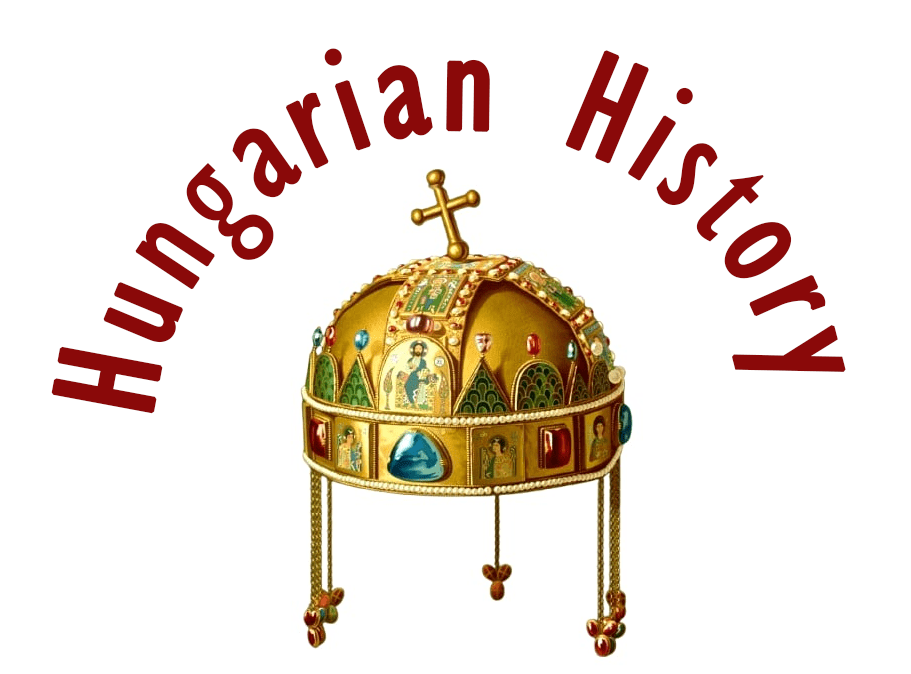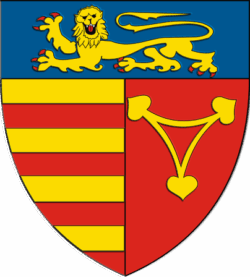
Nagytalmács (Tălmaciu, Talmesch) is a town in Romania, in the county of Szeben, but in the past it guarded the border of the Kingdom of Hungary and Transylvania. On a 591 m high hill southeast of the town stands the ruins of the Talmács castle (Landeskrone), guarding the northern entrance to the Vöröstoronyi Pass. It was almost finished in 1370 and had been completed by 1376. Location: https://tinyurl.com/4d74y9wy

The name of Talmács probably comes from the Tolmács Pecheneg (Besenyő) tribe name. In 1318 it was called Tholmach, in 1335 Tholmas, in 1342 Talmacz, in 1429 Talmucz, in 1480 Talmysz, in 1503 Thalmak, in 1854 Nagy Talmács, Gross-Talmatsch, and Talmaciu.

Talmács may have been initially inhabited by the Pechenegs, who were settled here after 955 to protect the then border line. Later, the settlement, which was probably depopulated during the Mongol invasion, was settled by Saxons. They became the new founders of Talmács.

At the eastern end of the Resinari range of the Szeben Mountains, at the junction of the Szeben (Cibin) river from the north and the Cód stream from the west, lies the village of Nagytalmács (Talmesch, TéTlmaciu), first mentioned in 1265 as “Tolmach”.

Of the three castles defending the Vöröstorony Pass (Talmács Castle, Vöröstorony, Lator Castle), the ruins of the northern fortress, Talmács Castle (or Koronavár, Landskron), crown the hilltop south of the settlement. In 1369, Talmács was described as a civitas. In 1370, King Lajos the Great, in a decree sent to the inhabitants of Szeben, obliged the town to build a castle here to protect the Vöröstoronyi Strait.

A fortified monastery had stood on the site of the fortress, which had already been built by 1376, but a few years before the decree was issued, Vlaicu, the Voivode of the Wallachian Lowlands, destroyed it, thus opening a gap in the already weak defensive system of the strait.

Until 1453, the strong stone castle was a royal castle – and as such it was under the administration of the Transylvanian voivode – when King László V. annexed the castle, which belonged to the Fehér county, together with the other two forts defending the pass – Vöröstorony and Lator castle – and the seven villages belonging to them to the Saxon seat of Szeben. After 1453, it became the seat and the only settlement with a Saxon population in the newly formed Talmács Seat.

Its late Gothic Lutheran church was fortified in 1520, but in 1829-31, when the church was rebuilt, most of its walls were demolished. The king ordered the destruction of Talmács castle – and at the same time the fortification of the other two – but this did not happen, because in 1535 Majláth István, the Transylvanian Voivode, took Talmács castle by force, which was guarded by the inhabitants of Szeben who were defying King János, although the castle, which had been mortgaged to the Voivode, could be redeemed by the city of Szeben in 1539 for 2000 forints, and thus it was again in the possession of the Saxons. We do not know when the castle was destroyed.

Today, visitors to the castle are greeted by the imposing ruins of the gate tower on the eastern side. A deep moat runs along the south side of the 100 x 45 m oval-shaped castle, which follows the shape of the hilltop. The towers to the east, south, and west are now just stumps of their towers. The foundations of the outer ramparts of the castle are still standing here and there, while the inner buildings are almost destroyed.

The modern history of Nagytalmács
In 1850, 463 of its 586 inhabitants were of German and 111 of Gypsy nationality; 459 were Evangelical and 116 Orthodox.
The Evangelical Church in 1766 consisted of 170 men and 186 women. In 1876, it was annexed to the county of Szeben, and in 1879, the seat of the district of the Nagydisznód administrative district was moved here. In 1910, 760 of its 1,284 inhabitants were German, 224 Romanian, 183 Hungarian, 52 Ruthenian, 35 mainly Polish, and 25 Slovakian; 696 Evangelical, 229 Roman Catholic, 150 Orthodox, 117 Greek Catholic, 62 Reformed, and 29 Unitarian. (The census figures are unrealistic in that, in addition to those permanently settled here, they include workers from the sawmill of the Hungarian-Italian Forest Industry Ltd. temporarily operating in Feltrinellitelep.)

The industrialisation of the former market town began in 1924 with the establishment of a spinning mill. From 1936, the factory built housing for its workers. The first permanent Orthodox priest was also installed here, the few Romanian inhabitants having previously attended the church in Kistalmács.

The administrative annexation of Bojca and Kistalmács took place in 1948. During the years of socialism, a housing estate was built, where Moldovans and Oltenians, among others, moved in. Meanwhile, the Saxon population migrated to Germany. In 1989, it was granted the status of a town, as part of Ceaușescu’s village demolition project.

In 2002, of its 5,615 inhabitants, 5,394 were Romanian, 103 Roma, 76 German, and 32 Hungarian; 5,297 Orthodox, 62 Evangelical, 49 Evangelical Christian, and 31 Roman Catholic.

Dear Readers, I can only make this content available through small donations or by selling my books or T-shirts.
Please, support me with a coffee here: https://www.buymeacoffee.com/duhoxoxa
You can check out my books on Amazon or Draft2Digital. They are available in hardcover, paperback, or ebook:
https://www.amazon.com/dp/198020490X or at https://books2read.com/b/boYd81

My work can also be followed and supported on Patreon: Become a Patron!http://Become a Patron!
Become a Patron! Donations can be sent by PayPal, too: https://tinyurl.com/yknsvbk7


https://hungarianottomanwars.myspreadshop.com/all
Subscribe to my newsletter here: https://tinyurl.com/4jdjbfkn
Here are more pictures of Talmács Castle:



















